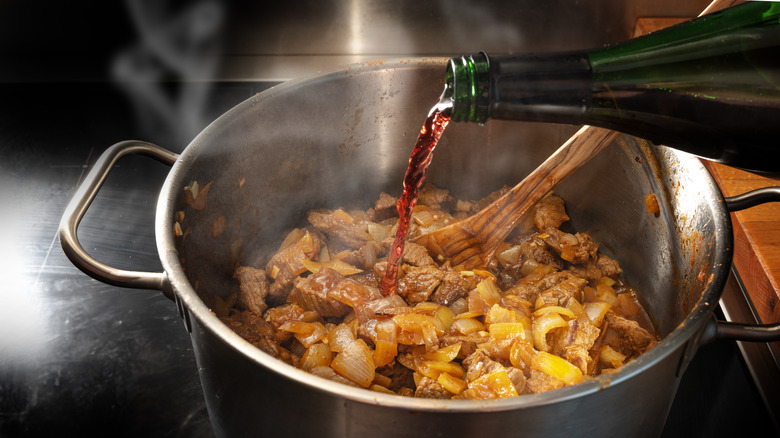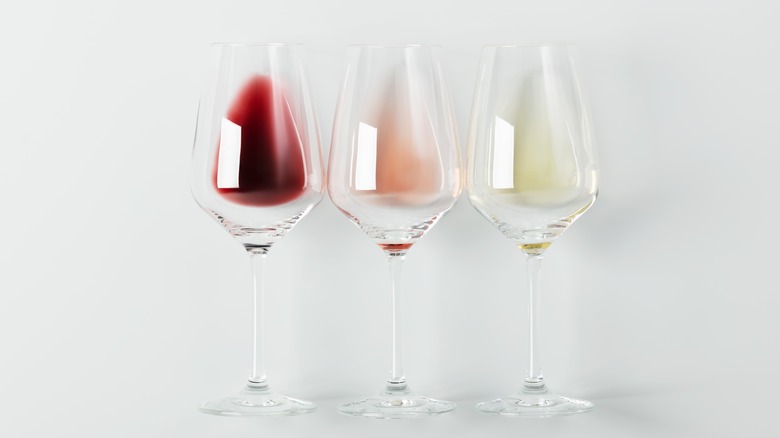The Biggest Difference Between Regular And Cooking Wine
Long before you were old enough to drink wine, you may have been curious about that dusty bottle of cooking wine in your mom's pantry. It was probably packaged to look like vinegar or another condiment and stored beside the balsamic, while brought out to deglaze pans from time to time.
Cooking wine has a pretty gnarly taste, as anyone brave enough to try drinking it will likely confirm. Though it is technically wine, as it's made from grapes and has alcohol content, the biggest difference is that cooking wine is designed to keep for longer than drinking wine and its extended shelf life is achieved through the addition of preservatives like potassium sorbate and potassium metabisulfite as well as salt. Not exactly something you'd want to have a glass of! For this reason, it's also usually stocked in the aisles near vinegars and oils.
But, like everything, cooking wine has its benefits and detractions. Whether or not you should give it a chance all depends on what you're looking for in a recipe.
How to use cooking wine
First, it may be helpful to know some basics about wine in dishes. Wine is often used in cooking applications such as deglazing pans and adding a dimension of flavor to a meal. The acid in the wine can help to break down and tenderize meat, fish, or vegetables, while also unsticking all of those delicious fats from your pan so they incorporate into the sauce. The flavor of the wine will change throughout the cooking process as the alcohol in the wine burns off, leaving a slight acidity and some fruity flavors.
Choosing a cooking wine will require a bit of forethought; they are often available in red, white, sherry, or marsala, so you then have to decide if you want to use one of them or the traditional stuff. First, you'll want to check to see whether your recipe calls for red or white wine, or if it even calls for a fortified wine like sherry or marsala (which is used to make the popular Italian-style chicken marsala).
Cooking wine will still offer the acidity you need and perform the same chemical function as traditional wine, but the varying qualities of cooking wine compared to normal wine may reflect in your dish. One big benefit is that cooking wine will long outlive your other bottles of vino, and can be used a year from opening (compared to about three to five days for other wines).
What kind of wine should you cook with?
The general rule of thumb when it comes to using vino in the kitchen is that you shouldn't cook with any wine you wouldn't drink. Now, what that means is going to vary from person to person. Perhaps you have a $10 California blend that's your grocery store go-to. Or maybe you only drink $20-plus bottles from a specific region of France. The point is to find a sweet spot between drinkable and cookable.
In fact, cheaper wines tend to work rather well in recipes. Those intense flavors mellow out in the pan, and get overpowered by the other ingredients. So there's really no need to splurge on something fancy for your boeuf bourguignon. Truthfully, since cooking changes the flavors of all wines, largely simplifying them, the nuances of a fine wine will largely get flattened when cooked anyway. So, don't be afraid to try a cooking wine under $10. Even cooking with $2 Chuck is doable!



